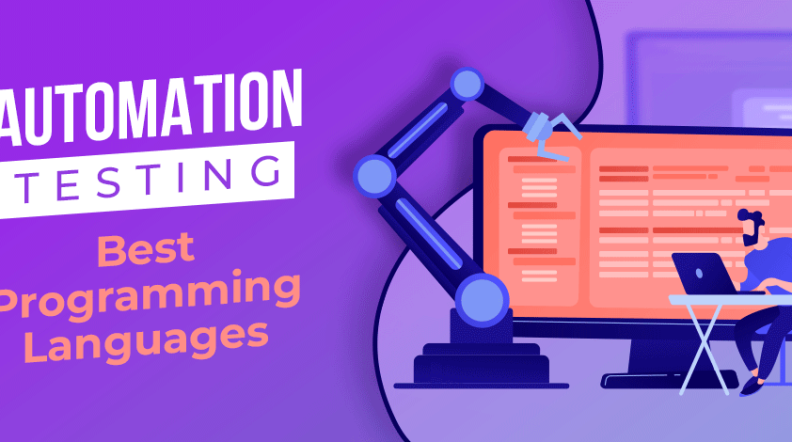Best Programming Language for Automation: A Comprehensive 2024 Guide






In the rapidly evolving world of technology, automation stands out as a critical component for efficiency and innovation. With a myriad of programming languages available, selecting the right one for automation projects can be daunting. This guide aims to provide a clear overview of the top programming languages for automation in 2024, considering factors such as language popularity, ease of use, and the specific needs of various automation tasks.
Language popularity plays a significant role in this selection process, as widely adopted languages tend to have better community support, more extensive libraries, and more robust frameworks. This guide delves into each language’s strengths and weaknesses, helping individuals and organizations make informed decisions to streamline their automation efforts effectively.
Exploring the Best Programming Languages for Effective Automation
Identifying the best programming languages for automation hinges on understanding the unique features and capabilities of each language. From Python’s simplicity and readability to Java’s platform independence and JavaScript’s versatility in web automation, this exploration considers key aspects such as language popularity, integration with testing frameworks like Selenium and Appium, and the specific requirements of programming languages for automation.
1. Python: The Leading Choice for Automation Projects
Python reigns supreme in the automation domain, thanks to its straightforward syntax and powerful libraries. Ideal for both beginners and seasoned developers, Python simplifies the creation of automation scripts, making it the go-to choice for automating repetitive tasks and software processes. With frameworks like pytest, it also offers robust solutions for data science and other complex automation needs.
Why Python Dominates in Automation Testing
The versatility of Python across different operating systems underscores its dominance in automation testing. Its comprehensive standard library and third-party modules streamline the automation process, enabling developers to focus on creating effective tests without getting bogged down by the intricacies of the language. Python’s adaptability makes it an invaluable tool in the automation tester’s arsenal.
2. JavaScript: Versatile and Widely Adopted
JavaScript’s widespread adoption is not just confined to web development; it also excels in automating tasks across various platforms. Tools like Puppeteer have empowered developers to automate browser actions for testing purposes, leveraging JavaScript’s capabilities to simulate user interactions on the web. This makes JavaScript an indispensable asset for web automation projects.
The Role of JavaScript in Web Automation
With the advent of frameworks like Nightwatch.js, JavaScript has cemented its role in web automation, offering a seamless way to automate testing of web applications. Its widespread use across the internet means that JavaScript is well-positioned to handle the dynamic nature of web content, making it a preferred choice for developers looking to automate web testing efficiently.
3. Java: Reliable and Scalable for Large Projects
Java stands out for its reliability and scalability, making it an excellent choice for large-scale automation projects. Its long-standing presence in the industry has led to a wealth of libraries and frameworks that support automation, coupled with its strong integration capabilities. Java’s platform-independent nature further adds to its appeal for enterprise-level automation tasks.
Java in Enterprise-Level Automation Testing
The robustness of Java makes it ideal for enterprise-level automation testing, where scalability and reliability are paramount. Its seamless integration with tools and frameworks supports continuous integration processes, enhancing the efficiency of automation workflows. Java’s strong typing and object-oriented features also contribute to its suitability for complex automation scenarios in large organizations.
4. C#: A Strong Contender in the Automation Space
C# emerges as a strong contender in the automation landscape, especially for desktop and web application testing. Its syntax and programming model are similar to other prominent languages, making it easier for developers to adopt. C# benefits from the rich ecosystem of the .NET framework, providing robust libraries and tools for creating efficient automation scripts and tackling repetitive tasks.
Utilizing C# for Desktop and Web Application Testing
C# is particularly effective for automating desktop and web applications, thanks to tools like Puppeteer for browser automation. Its integration with the .NET framework offers a comprehensive set of features for automating software, facilitating the development of reliable and scalable automation solutions. This makes C# a versatile and powerful language for automation projects.
5. Ruby: Simple Syntax with Powerful Capabilities
Ruby stands out for its simple syntax and powerful capabilities, making it a favorite among developers for automation tasks. Its rich ecosystem and concise code allow for rapid development and leveraging existing libraries and frameworks. Ruby’s dynamic nature and object-oriented design promote productivity and flexibility in automation projects.
Ruby’s Contribution to Simplified Test Scripts
Ruby’s contribution to automation is most notable in the realm of simplified test scripts. Its readable syntax and extensive libraries enable developers to write concise and maintainable code, streamlining the testing process. Ruby’s flexibility and the ease with which it allows developers to leverage existing resources make it a valuable tool for automating testing tasks.
Key Considerations When Choosing an Automation Programming Language
Choosing the right programming language for automation involves a careful consideration of various factors. Python’s prominence, for instance, is bolstered by frameworks like pytest, making automation with Python a popular choice. However, selecting a language goes beyond just popularity; it requires a comprehensive evaluation of the project’s specific needs and the language’s suitability.
Project Requirements and Language Suitability
Assessing the project’s requirements and the suitability of a programming language is crucial in the selection process. Factors such as the nature of the application, the complexity of the tasks, and the existing infrastructure play a significant role in determining the most appropriate language. A thorough understanding of these elements ensures that the chosen language aligns with the project’s goals and technical needs.
Community Support and Documentation
Community support and documentation are indispensable resources for any programming language, especially in the realm of automation. A strong community not only provides valuable insights and solutions to common problems but also contributes to a wealth of documentation and tutorials. These resources are vital for overcoming challenges and enhancing the efficiency of automation projects.
Integration with Testing Frameworks and Tools
Choosing the right programming language for automation also hinges on its integration capabilities with testing frameworks and tools. The ease with which a language can integrate into continuous integration pipelines and popular testing frameworks significantly impacts the automation workflow’s efficiency. For instance, languages that offer seamless integration with tools such as Selenium or Jenkins allow teams to automate their testing processes more effectively, leading to faster development cycles and higher quality software products. Therefore, when selecting a programming language for automation projects, it’s crucial to consider not just the language’s syntax or popularity but also its ecosystem of compatible testing frameworks and tools.
Learning Curve and Team Expertise
The complexity of a programming language and the team’s familiarity with it are critical factors to consider. Languages with a steep learning curve can delay automation projects as team members struggle to become proficient. On the other hand, choosing a language that aligns with the team’s existing expertise can accelerate development and reduce the likelihood of errors. For instance, if a team is already skilled in Python, leveraging Python for automation projects can utilize the team’s existing knowledge and experience, making the process more efficient. Therefore, assessing the learning curve and matching it with team expertise is essential for the smooth execution of automation projects.
Real-World Applications: How Different Languages Excel in Specific Automation Areas
Different programming languages shine in various automation domains, guided by their features, libraries, and community support. Python, with its simplicity and powerful libraries, is often the go-to for desktop and web automation, while JavaScript, integral to web development, excels in front-end automation scenarios. Java, with its robustness, finds its place in large-scale enterprise environments. The choice of language can significantly influence the efficiency and effectiveness of automation efforts, making it crucial to align the language with the specific needs of the project.
Automating Web Applications: JavaScript and Selenium
JavaScript, being at the heart of web development, plays a pivotal role in automating web applications, particularly through the use of Selenium for browser automation. Its seamless integration with the development process enables teams to write efficient test automation scripts that are in harmony with the source code. This close relationship enhances the quality of front-end automation, making JavaScript a preferred choice for open-source automation tools. Moreover, its ubiquity in front-end development ensures a wide range of community resources and libraries are available, further streamlining the automation process.
Desktop Application Testing: Python and C# Strengths
Python and C# stand out for desktop application testing due to their extensive support across various operating systems and their ability to streamline the automation process. Python, renowned for its simplicity and readability, allows for quick script development and testing across different platforms. C#, with its powerful .NET framework, offers a robust environment for developing sophisticated tests for Windows-based applications. The choice between Python and C# often boils down to the specific requirements of the project and the operating environments in which the applications are deployed.
API Testing: Ruby and Python Use Cases
Ruby and Python are frequently chosen for API testing, thanks to their simplicity and the powerful libraries available. Python, as an open-source programming language, offers a wide range of libraries that facilitate the automation of API tests, making it a preferred programming language for test automation. Ruby, with its straightforward syntax and strong track record in web testing, continues to grow in popularity in test automation, particularly for API testing scenarios. Both languages offer extensive community support, enhancing their effectiveness for automation tasks, including automated browser testing.
Mobile Automation Testing: Java and Kotlin for Android Apps
Java and Kotlin stand out in mobile automation testing, especially for Android apps, due to their strong integration capabilities with Android app development environments. Java, being the traditional language for Android, offers extensive libraries and tools that are optimized for mobile testing. Kotlin, on the other hand, provides modern language features such as null safety, which can minimize common errors during test development. Both languages allow developers to build robust automated tests that ensure the quality and performance of mobile applications.
Future-Proofing Your Automation Skill Set
As automation technologies evolve, keeping skills updated is crucial for staying relevant in the field. Embracing new programming languages and tools can provide a competitive edge and open up new opportunities in automation projects.
Staying Ahead with Emerging Languages
Adapting to emerging programming languages is key to future-proofing one’s automation skill set. Languages such as Go and Kotlin are gaining popularity in the automation space for their efficiency and modern features.
Go and Kotlin: Rising Stars in Automation
Go and Kotlin are increasingly recognized for their contributions to automation projects. Go, with its simplicity and performance, is becoming a popular choice for writing automated tests, especially in cloud-based and microservices architectures. Kotlin, leveraging the vast ecosystem of Java libraries, brings additional safety and conciseness to automation projects, making it an attractive option for developers looking to improve their automation strategies with modern language features.
Adapting to New Technologies: AI and Machine Learning in Automation
The incorporation of AI and machine learning into automation is revolutionizing how tasks are approached, offering smarter solutions and predictive analytics. Embracing these technologies allows for more sophisticated and efficient automation strategies, pushing the boundaries of what can be automated and how automation tasks are executed.
Continuous Learning: Online Resources and Community Engagement
Engaging with online resources and the community is vital for continuous learning in the fast-evolving field of automation. Participating in forums, following best practices shared by experts, and contributing to open-source projects can enhance one’s understanding of automation technologies and methodologies, ensuring skills remain up-to-date and relevant.
Overcoming Common Challenges in Automation Programming
Automation programming comes with its set of challenges, from maintaining test scripts to ensuring the scalability of automation solutions. Addressing these issues requires a proactive approach and a solid understanding of the tools and languages at hand.
Debugging and Maintaining Test Scripts
Debugging and maintaining test scripts are crucial for the reliability of automation tests. Regularly updating test scripts to reflect changes in the application and employing best practices for debugging can significantly reduce downtime and improve the accuracy of test results.
Ensuring Scalability of Automation Solutions
As projects grow, ensuring the scalability of automation solutions becomes increasingly important. Designing automation frameworks that can easily adapt to changing project requirements and scale with the application ensures that automation efforts remain effective over time, supporting continuous integration and delivery pipelines.
Navigating the Complexity of Advanced Automation Scenarios
Advanced automation scenarios often involve a complex interplay between desktop applications, artificial intelligence, and network servers. Successfully navigating these scenarios requires a deep understanding of how these components interact. For instance, leveraging artificial intelligence to automate decision-making processes in desktop applications can significantly enhance efficiency. However, ensuring seamless communication between these applications and network servers is crucial for the reliable execution of automated tasks. Choosing a programming language that offers robust libraries and frameworks to support these interactions is key to overcoming the intricacies of advanced automation.
Maximizing the Impact of Automation with the Right Programming Language
The efficacy of an automation solution is heavily influenced by the choice of programming language. Languages such as Python and JavaScript, which slack use, offer extensive libraries and frameworks that simplify the automation of desktop applications and web processes. Python, with its simplicity and readability, is particularly effective for beginners and experts alike, while JavaScript’s ubiquity in web development makes it indispensable for automating browser-based tasks. Selecting a language that aligns with the project’s requirements and the team’s expertise is fundamental to maximizing the impact of automation efforts.
Case Studies: Success Stories in Automation Testing
Success stories in automation testing often highlight the versatility of multiple programming languages in tackling diverse challenges. For instance, system administration tasks on Windows systems have been streamlined using PowerShell and Python, showcasing effective automation in maintaining system health and deploying updates. Additionally, e-commerce websites have benefited from Ruby and JavaScript, where they have been used to automate user experience testing, significantly reducing the time to market. These case studies underscore the importance of choosing the right language and development environments to achieve effective automation.
Expert Insights: Interviews with Industry Leaders
Interviews with industry leaders reveal a consensus on the critical role of adaptability in automation programming. These experts emphasize the importance of being proficient in multiple programming languages to tackle the varied demands of automation projects. They also highlight the growing significance of artificial intelligence in enhancing automation capabilities, suggesting a shift towards more AI-centric programming languages in the near future. This insight underlines the evolving nature of automation programming and the need for developers to continuously update their skill sets to stay relevant.
Unveiling the Future of Automation Programming
The future of automation programming is poised for significant transformations, driven by advancements in artificial intelligence and machine learning. As these technologies become more integrated into automation solutions, the demand for programming languages that can seamlessly interact with AI and ML models is expected to rise. This evolution suggests a shift towards languages that offer robust support for AI and ML integration, enabling more sophisticated and intelligent automation capabilities. Developers looking to future-proof their careers in automation should focus on enhancing their expertise in these emerging languages.
Trends to Watch: AI, ML, and Beyond
The integration of AI and machine learning into automation is not just a trend but a paradigm shift that is reshaping the landscape of automation programming. This integration is enabling the creation of more intelligent and self-improving automation systems, capable of handling complex tasks with minimal human intervention. As AI and ML technologies continue to advance, they are expected to play an even more central role in automation, pushing the boundaries of what is possible. Staying abreast of these trends is crucial for anyone involved in automation programming.
Preparing for Next-Gen Automation Challenges
As automation technologies evolve, so do the challenges faced by developers. Preparing for next-gen automation challenges involves not only mastering current programming languages but also anticipating future trends. This includes understanding the potential impacts of AI and machine learning on automation, as well as the rising importance of languages like Go and Kotlin. Developers must also focus on developing soft skills, such as problem-solving and adaptability, to navigate the complexities of advanced automation scenarios effectively. Embracing continuous learning and staying engaged with the developer community are key strategies for staying ahead in the rapidly changing field of automation programming.
Elevating Your Automation Game: Final Thoughts and Recommendations
In today’s highly competitive environment of software development and automation, choosing the right programming language and tools is crucial. Programming languages like Python and Java have stood out for their compatibility with Selenium WebDriver, making them suitable for developing complex automation scripts for both web and mobile applications. This seamless integration with automation testing frameworks is essential for enabling efficient data handling and configuration management, which are key to successful automation projects. Furthermore, Python’s structured programming language, along with its native support for concurrency, makes it highly suitable for automating tasks in software applications, thereby enhancing productivity and efficiency.
Moreover, the Microsoft ecosystem, including various Microsoft technologies, provides a robust environment for automation, especially when working with desktop and web application testing. C#, with its seamless integration with the .NET framework and compatibility with Selenium framework, emerges as a strong contender, particularly suitable for creating automation solutions in the Microsoft ecosystem. As the landscape of automation evolves, with mobile apps for both Android and iOS platforms gaining popularity, the demand for languages that offer native support for mobile applications, including iOS apps, continues to rise. Therefore, staying abreast of emerging technologies, engaging with community forums for insights, and continuously learning about new automation testing frameworks and tools will be pivotal in navigating the future of automation programming. By focusing on languages and technologies that offer extensive community support and documentation, software developers can ensure they are well-equipped to tackle next-gen automation challenges effectively.